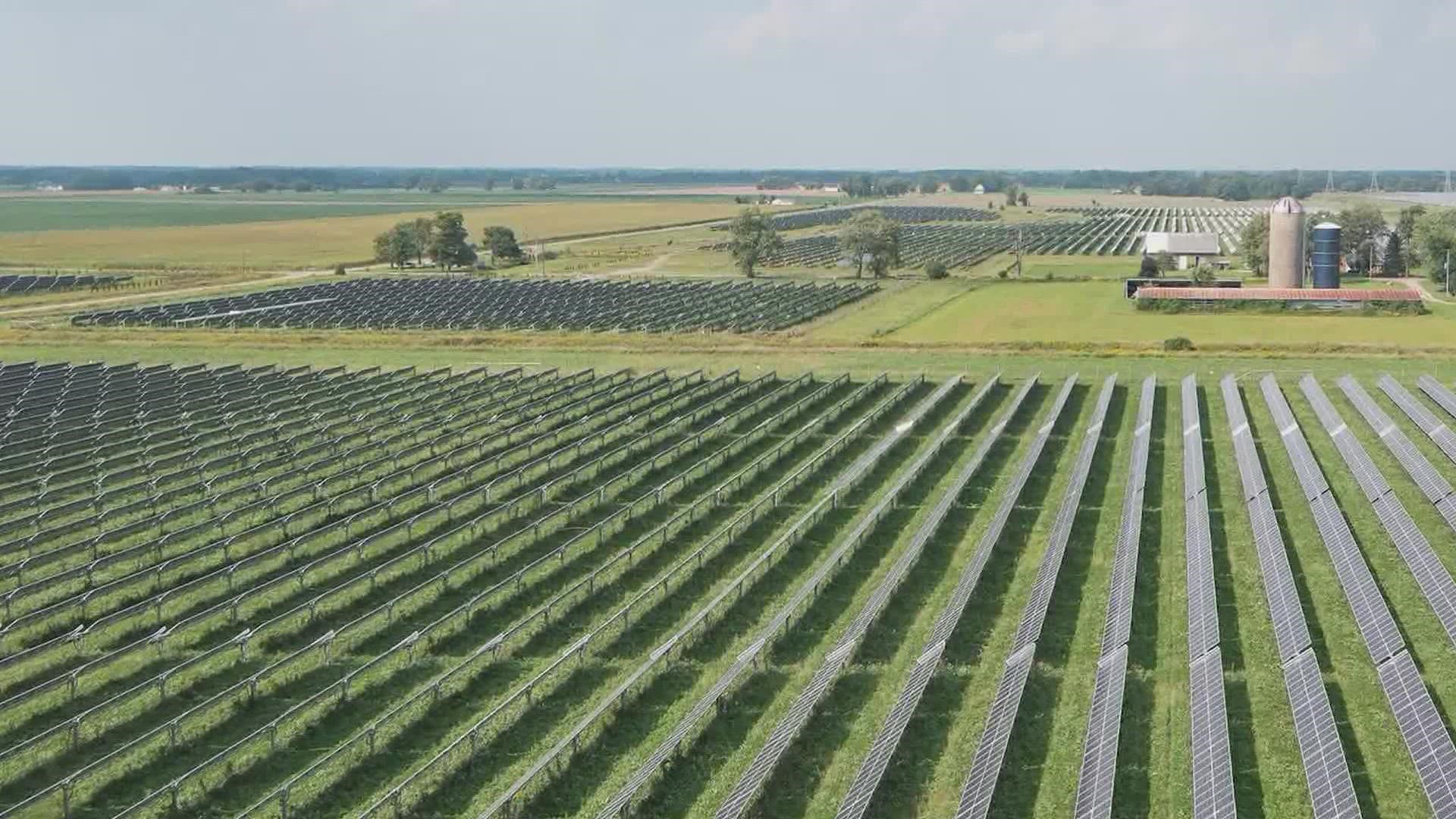GRAND MOUND, Iowa — A solar energy development company is waiting for the Clinton County Board of Supervisors to approve its permits so it can build a 1,500-acre solar farm near Grand Mound, Iowa.
Ranger Power is developing the $250-million Hawkeye Solar Project that would build hundreds of thousands of solar panels on privately owned farmland leased from 17 landowners.
The solar panels would generate enough energy to power 50,000 homes and businesses, Development Manager Sam O'Keefe said. It's expected to reduce carbon dioxide emissions by hundreds of thousands of metric tons annually, the equivalent to taking nearly 100,000 cars off the road.
Over the 40-year lifespan of the project, it would generate $12 million in tax revenue. Half of that would go to the Central Dewitt and Calamus-Wheatland Community school districts. Another 40% would go to Clinton County for roads, infrastructure and public services, and 10% would go to local townships, area colleges, agricultural extension, assessor and the state.
However, not everyone in Grand Mound is on board with the project.
Clinton County's Planning and Zoning Commission voted almost unanimously against Hawkeye Solar's rezoning application last month.
The county Board of Supervisors has the final say, though. It heard from both supporters and opponents of the project during a meeting Thursday night, March 24. The board said it will be deliberating the project and making its decision on the zoning application 1 p.m. Thursday, April 7.
Those against the project are worried it would take too much farmland out of production.
"You need every available acre to grow food to feed the world, to feed us," said Faye Kennedy, who would have the panels on two sides of her property.
Concerns also included damage to property value. Some neighbors just simply don't want to live near the solar panels.
"There's an awful high pitched buzz; it can drive a person crazy," Nancy Olson said. "This will not be good for my health either. I do not want this."
Olson continued on to read a portion of Clinton County's Master Plan that outlines having a successful community, meeting the needs of residents and maintaining the quality of life that drew resident's to the community.
"You will not retain the quality of life that initially attracted those residents to our community by letting this solar project happen," she said.
O'Keefe spoke during the meeting about how Ranger Power has amended some of its original plans based on concerns of the residents. It's now proposing building a vegetative buffering around the panels to partially obscure them.
He added the 1,500 acres they'll develop on will not have a significant impact on the agriculture output in the county.
Several of the people who have agreed to lease their land also spoke at the meeting. Nick Boeyink pointed out that not only does the project check off every box that the county and state requires, it's his own personal decision.
"It checks the voluntary participant box," he said. "Everyone who doesn't want a solar panel on their land when this project is built will not have a solar panel on their land."
Boeyink added that he wants Iowa to become an energy exporter instead of an energy importer.
"I don't want to buy energy in Illinois," he said.
Angie Costello Acosta echoed similar thoughts despite being skeptical to lease her land at first.
"We landowners are not going into this blindly," she said, noting the extensive research she's done on the topic. "Solar farms are a win-win-win situation. A win for me because it's a steady income for my retirement. A win for Clinton County because it's tax revenue … and a win for the U.S. because Iowa will become a leader for clean energy for our country."
Costello Acosta spoke about the financial risks involved with farming and said she feels that the solar will help supplement her income.
"Farming is truly a gamble," she said. "Solar is a safe bet. I feel that I am the best steward for my land, and I hope the government will not deny me the right to do what I want with it. I'm asking you to please vote 'yes' for the zoning amendment to allow solar farms."
O'Keefe said Ranger Power has amended where the panels will be placed in relation to neighboring land, pushing them back further. It plans to have the panels set back 250 feet from the neighboring landowner. O'Keefe pointed out that this is the equivalent of the distance from the end zone in a football field to just past the 20-yard line by the opposite end zone.
Clinton County law only requires the setback to be at least 50 feet.
Current proposed legislation in the state seeks to increase that setback even more though, and some residents urged the board not to make a decision until that possible legislation gets further along.
Senate File 2321 would mandate that solar panel fields be build at least 1,250 feet from the nearest neighboring landowner.
As currently written, it also wants to restrict commercial solar projects to lower quality ground and requires solar panel fields to be at least a half-mile from the next field.
It's using the corn suitability rating to determine the ground quality. Iowa State University developed the CSR to measure potential soil productivity based on soil profile, slope characteristics and weather conditions.
The legislation would require the agricultural land to have an average CSR of 65 or lower before a utility-scale solar energy facility be installed on it.
Clinton County has a 62.4 average, according to ISU's latest data in 2017. Based on the rating, 51 other Iowa counties would also be excluded from installing commercial solar projects.
O'Keefe encouraged the Board of Supervisors to grant Hawkeye Solar's rezoning application, saying after multiple hearings, Ranger Power has checked all the county requirements.
If approved, construction of the panels could take anywhere from 12 to 18 months, O'Keefe previously told News 8.

